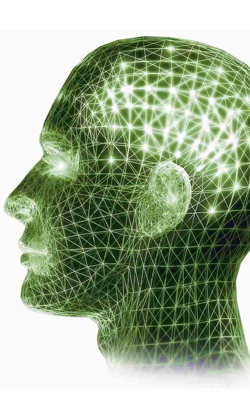
Have you ever found it difficult to remain inspired, while you were planning a visit to the gymnasium? Clearly, it may not be your problem - it might all, be put down to the way in which your own brain's connected. Researchers will need to pinpoint the location of the human brain that is definitely accountable for exercise inspiration. Although the unravelling could possibly someday result as a means of inspiring individuals to be fit as well as healthy, scientists claim it might additionally be considered to produce far better remedies for depressive disorders.
Eric Turner together with Yun-Wei Hsu, of Seattle Children’s Research Institute’s Centre for Integrative Brain Research, found that the dorsal medial habenula handles the need to work out in mice. The framework of the habenula is comparable in human beings as well as rodents in addition to these kinds of simple services in emotion control together with desire will tend to be the exact same across species, they described.
The understanding that these kinds of a certain part of the human brain might be accountable for inspiration, to work out can assist scientists cultivate a lot more focused, valuable remedies for depressive disorders. Exercising is considered to be the most reliable non-pharmaceutical treatment for clinical depression. The framework of the habenula is comparable in human beings as well as rodents together with these types of fundamental capabilities in emotion control together with desire will tend to be the identical across species, they described.
As the unravelling might someday result in a means of motivating individuals to be healthy together with energetic, scientists consider it might be utilized to generate much better remedies for depressive disorders.‘Changes in physical exercise along with the failing to take pleasure in satisfying or even enjoyable experiences are a couple of hallmarks of main depressive disorders,’ Dr Turner declared.
‘But the human brain pathways accountable for the workout inspiration have never been perceived as properly learned. Today, we are able to seek out methods to change human activity during this particular region of the human brain without impacting the remainder of the brain’s process.’ The study released in the Journal of Neuroscience, employed mice which were genetically engineered to prevent signals from the dorsal medial habenula. Dr Turner's squad teamed up with specialists at the University of Washington to prove that the genetically engineered mice were sluggish and even ran much less as compared to standard mice, which like to run in their physical exercise wheels.
The genetically designed mice; even gave up their choice for having sugary drinking water. ‘Without a working dorsal medial habenula, the mice grew to become couch potatoes,’ Dr Turner claimed. ‘They were definitely competent at running yet emerged unmotivated to undertake it.’ In one more band of mice, the group initialized the dorsal medial habenula making use of laser beam technologies generally known as Optogenetics. The mice could possibly decide to actuate this section of the human brain by switching one of two stroller wheels with their paws. The researchers discovered that the mice ‘strongly preferred’ rotating the wheel that triggered the dorsal medial habenula, which experts say indicates that this region is associated with gratifying behaviour.





